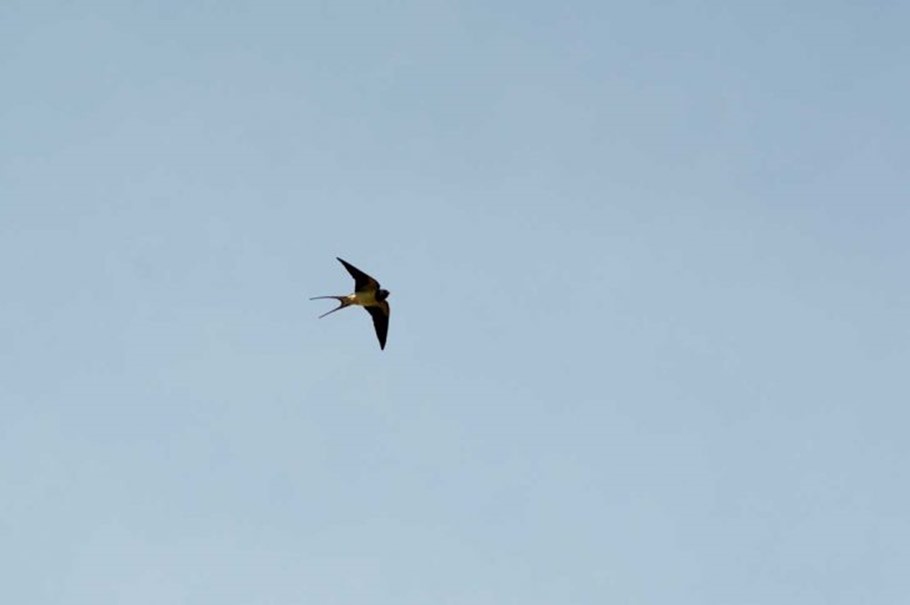To slow the spread of coronavirus, lockdown across the UK is keeping many of us away from the outdoors. Here are 10 simple ways to maintain that crucial connection with the countryside that we need.
Through your window
1. Many of us have whiled away the hours finding the shapes of familiar and fantastical objects in clouds as they drift by. But you can also use them to tell what weather might be about to come our way. For example, cumulonimbus clouds (the ‘King of Clouds’) towering high in the sky mean heavy rain is likely to be on its way.
There’s an old saying about cumulonimbus clouds: ‘mountains in the morning, fountains in the evening’. The Met Office has an interesting cloud-spotting guide. Why not look up now and see what clouds you can spot?
 Time out can be a great chance for some dreamy cloud-watching
Time out can be a great chance for some dreamy cloud-watching
2. If you’re lucky enough to live in an area relatively free of light pollution, then try a spot of stargazing. You should easily be able to pick out the constellation of Orion if you look to the south. CPRE’s annual Star Count, held each February, is based around the stars you can see in Orion.
Looking north you can find Ursa Major, the Great Bear. Part of this constellation, shaped like a ladle, is pretty easy to distinguish: this is called the Plough in the UK and the Big Dipper in the US and Canada.
3. Watch wildlife from your window: what signs of spring can you spot? There are butterflies on the wing during sunnier days now. These will be the insects that hibernated over winter: brimstones, peacocks and red admirals for example. They’ll be hungry and will be looking for nectar to feed on: fortunately, there’s plenty of blossom coming out on the trees now, along with buds and catkins.
4. Wake up early and open your window to hear the best of the birdsong. The dawn chorus is building up now, often led by the blackbird which usually starts singing first, although robins can perform through the night.
Some birds have simpler songs which makes them easy to identify by sound. Listen for the two note ‘tea-cher, tea-cher’ of the great tit, and the three note ‘coo-cooo-coo’ of the collared dove.
 Swallows can be seen returning to our skies – keep your eyes peeled! | Jacob Spinks, Northamptonshire
Swallows can be seen returning to our skies – keep your eyes peeled! | Jacob Spinks, Northamptonshire
5. And look out for the first summertime birds arriving from Africa, where they’ve spent the winter. Swallows, house martins, and – a little later – swifts will all be back over the next month or so. Even if you can’t get outdoors, these three should be easy to see if they’re swooping through the skies near you. Each year, a swallow will fly an incredible 12,427 miles between its nesting site in the UK and wintering grounds in southern Africa.
With a garden, balcony or window box
6. Smelling a flower can really lift the spirits, and there are some wonderful springtime scents to seek out. Sometimes you have to get up quite close, or down on the ground, but it is well worth it to inhale the perfume of a primrose, for example! English bluebells, which flower in April and May, have a lovely fresh aroma.
7. Birds are busily building nests and laying eggs. So a little extra food and water can be very helpful, especially if there’s a frost. Treats that birds can grab with the minimum of fuss, like sunflower hearts which have the shells of the seeds removed, are popular.
You can also think about what you might plant in your garden this year that could benefit birds and other wildlife with nectar, fruit and seeds later on…
8. …And now is the perfect time to plant seeds! Growing plants, whether for food, flowers or wildlife, can be very therapeutic. There’s something almost magical about a seed transforming into a seedling. Fast-growing plants like radishes, rocket, broad beans and sunflowers are great for getting children hooked on horticulture!
 The sun on your face can give a real boost
The sun on your face can give a real boost
9. Close your eyes and feel the sun on your face, even if it’s just for a minute or two. Experiencing this warmth on your skin is wonderful after being cooped up indoors, so take advantage of it when we have sunny days.
Rain can be refreshing too, and there’s that wonderful smell, ‘petrichor’, produced when the water hits dry soil.
10. Explore your garden at night: what creatures are visiting, what can you see, smell and hear? Listen out for hedgehogs snuffling and see if you can find bats flitting around. If you’re near woodland, you might be lucky enough to hear an owl or two. And even the tiniest of windowboxes can attract moths!
For more ideas visit the CPRE site at https://www.cpre.org.uk/discover/countryside-connections/?utm_medium=email&utm_source=engagingnetworks&utm_campaign=CU-0420_members&utm_content=Campaigns+update+April+2020+-+members
